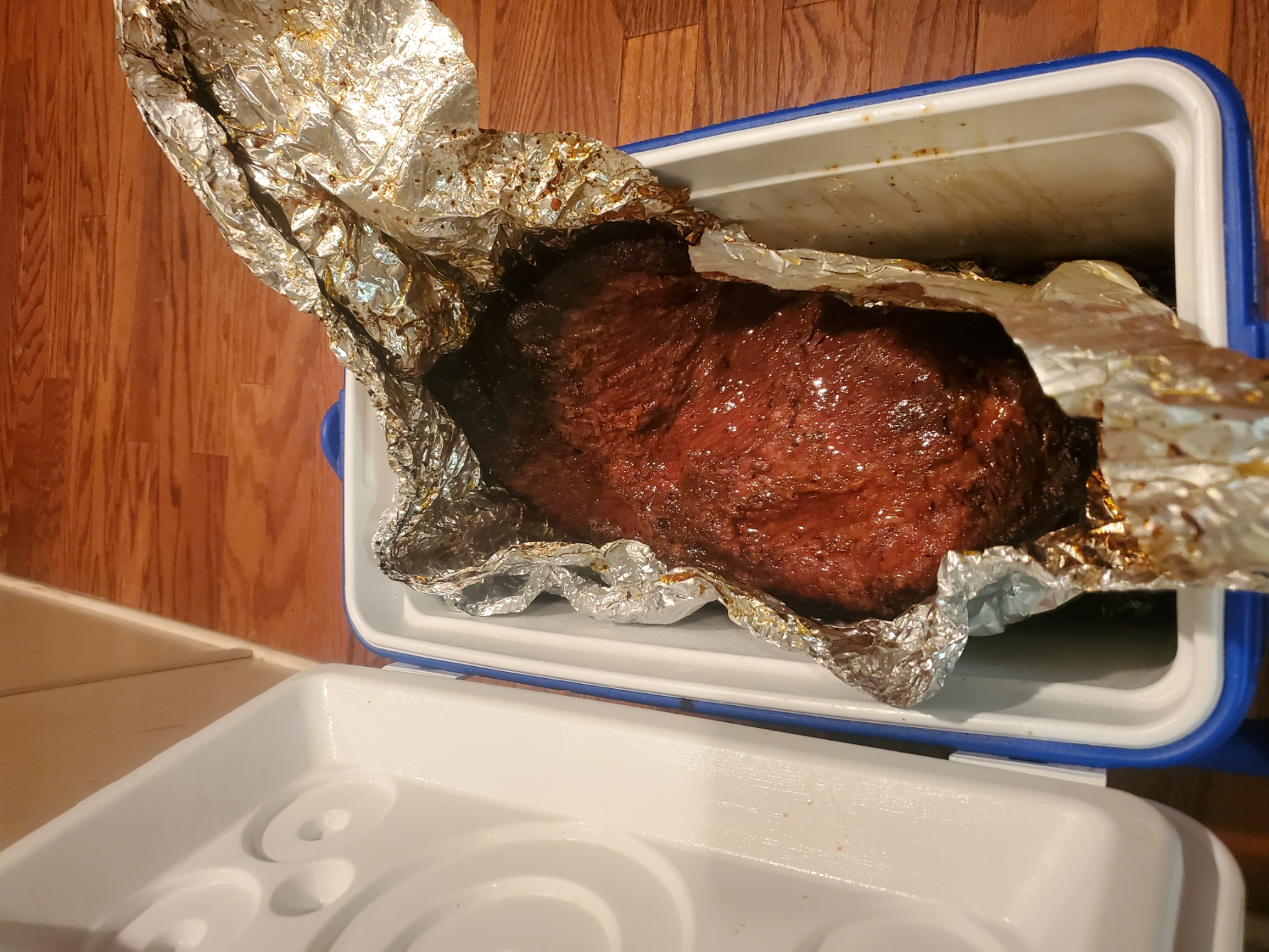Shopping list:
- brisket (I prefer 12-15 pounds. Less feels like not bothering with, more is hard to handle)
- marinade (optional, but adds a little flavor)
- yellow mustard (just like you'd put on a hot dog)
- rub (I like the Fiesta brand from the grocery store, but you do you)
- honey
- butter
- foil or parchment paper (I'll explain below)
- a really big foil pan, like you'd use for a turkey
- charcoal of your choice and/or hardwood pieces
On the "foil or parchment paper": you will be cooking your brisket for three hours on the smoker, and then for 9 hours in the oven. When you take it out of the smoker, you'll wrap it in either foil or parchment paper before you put it in the oven. (You'll also put it either in or over the big pan to catch drips.) If you want super-tender brisket that is almost too soft to slice, use foil. If you want firmer, more restaurant-style brisket, use parchment paper. My family prefers the more tender version, but tastes vary. There are a few other options related to tenderness vs. sliceability (is that a word?) that I'll discuss below.
Steps:
- Don't be wearing your best clothes
- Unwrap your brisket and set it on a flat surface that you don't mind getting messy
- Inject with marinade. Warning: the marinate tends to spray a little if you aren't really careful. That's why you're not wearing your best clothes. Alternatively, some people bag their brisket in marinade for awhile. I've never been that patient.
- Smear mustard all over your brisket. Like, a lot. This is mainly to make the rub stick.
- Smear rub all over your brisket. The whole bottle.
- If you have time, let everything sit for awhile. Some people refrigerate overnight, but I've had good results with just sitting for a few hours. I've even gone straight from adding rub into the smoker and it was fine, so don't stress too much about this part.
- Smokers vary, so I won't say too much. If you use an offset like I do, the chimney should stay fully open all the time. If you want to reduce airflow to control temperature, do it by partially closing the air inlet. If you have a pellet smoker ... I can't help you.
- With your smoker warmed up, place the brisket inside. If you use an offset smoker, I recommend fat cap up, thick end toward the heat. If you use a barrel-type smoker where the heat is underneath, I recommend fat cap down. I await the hatemail from purists.
- Close the smoker. Don't open it again for three hours. If you're lookin', you ain't cookin'. (You can and should, of course, open the firepit to add charcoal and wood as needed, just not the part the brisket is in.)
- Wait three hours. Visit with your family, friends or pets. Go for a walk. Take a nap. Whatever you like to do.
- Preheat your oven to 250F. If you prefer Celsius, then you figure it out. This isn't math class. If you prefer Kelvin, then you're probably a physicist, but hey, physicists can like brisket too.
- Unroll a really, really long piece of foil or parchment paper and set over your pan (I know that didn't make sense. See the picture below)
- Melt about half a stick of butter together with however much honey feels right. I've never measured. I probably do about equal parts butter and honey.
- Take the brisket out of the smoker and put it into the pan, on top of the foil/parchment paper. (This is why we set the wrapping in the pan first. If you pull the hot brisket out and then try to wrap it, it is a lot harder. Trust me.)
- Pour the honey/butter mixture over the brisket
- Wrap the foil/parchment paper around the brisket
- Put the brisket in the over for 9 hours
- Sleep. Unless you did the above early in your day, in which case I guess you might work, exercise, run errands, I dunno. That's up to you.
- Take the brisket out of the oven. Be careful, the pan may have hot drippings in it.
- Eat.
"Wait," you ask, "what temperature should my smoker be at?"
Answer: it doesn't matter all that much.
"What?" I hear you gasp. "How could it not matter? Don't I need a fancy multiprobe digital thermometer? Don't I need an app with graphs that I can post to Instachat or Facegram or Snapbook or that thing named after the sound a clock makes?"
Sure, do all that if you just want to. But the purpose of the smoker in this recipe is not to cook the brisket. The oven does that. The purpose of the smoker is to smoke the brisket. I shoot for around 200F in the smoker, but as long as it is hot enough to make smoke and not so hot that it burns or overcooks the brisket, you're good. Relax. It'll be okay.
Now, a little more about the foil/parchment paper thing, and a few more options for you to consider.
First off, people who smoke brisket are familiar with the "stall". That's the point at which the brisket temperature stops increasing for awhile, making it hard to get the brisket to the desired internal temperature without overcooking it. There are a lot of opinions out there about what causes the "stall". A common one is that it is when the internal fat melts. That does happen around the same temperature, but that is only a tiny part of it. The "stall" is actually caused by dehydration. Disagree with me if you like, but the reason your brisket is stalling is because it is drying out. The reason the "Texas crutch" method of wrapping your brisket in foil and putting it back on the smoker works is because it traps the moisture inside, creating a thin steam layer around your brisket. This layer preserves the internal moisture and, because the heat isn't escaping with the evaporated water, the brisket doesn't stall. For the observant reader, yes, I just told you to make steamed brisket. And it is AWESOME.
The big downside to the Texas Crutch, or my even more heretical method of wrapping AND using the oven, is that you lose your bark (the black, harder, sometimes even crunchy outer layer). I personally am not a big bark person, and I prefer the more tender meat to real bark. Fortunately, you have a few options:
- Wrap the brisket in foil, put it in the pan, and leave it for 9 hours. This is the most tender option, but you will have essentially no bark. Also, you may have so many drippings that the pan overflows, so watch out for that.
- Wrap the brisket it foil, put it in the pan, cook it for 6-7 hours, then pull it out, dump the drippings, and put it back in for the rest of the time. This is slightly less tender, but a little easier to slice. You still won't really have any bark. This is my personal favorite option.
- Wrap the brisket in parchment paper instead of foil. This is somewhat more permeable, so you'll trap less steam and therefore end up with a firmer brisket that you can cut into proper slices. You'll also have something resembling bark, but not the same as you'd get with 12 hours unwrapped on a smoker. Presumably, if you use parchment paper you'll also dump drippings after 6-7 hours
- Wrap in parchment paper, set the brisket on the oven rack instead of in the pan, and put the pan under it to catch the drippings. This is even a little firmer, because the brisket never sits in its juices. The danger is that the pan doesn't catch all the drippings - it is hard to find a pan that is really as big as a brisket - and you make a mess out of your oven. So do this at your own risk.
Pictures!
Here's my brisket, just in from the store. The day I took this picture, I was making two briskets. My local Sam's had a good deal on Prime brisket, so I went with that, but I usually just get Select and it is fine.

Here are most of the ingredients. Butter not pictured. It's butter. You know what butter looks like.
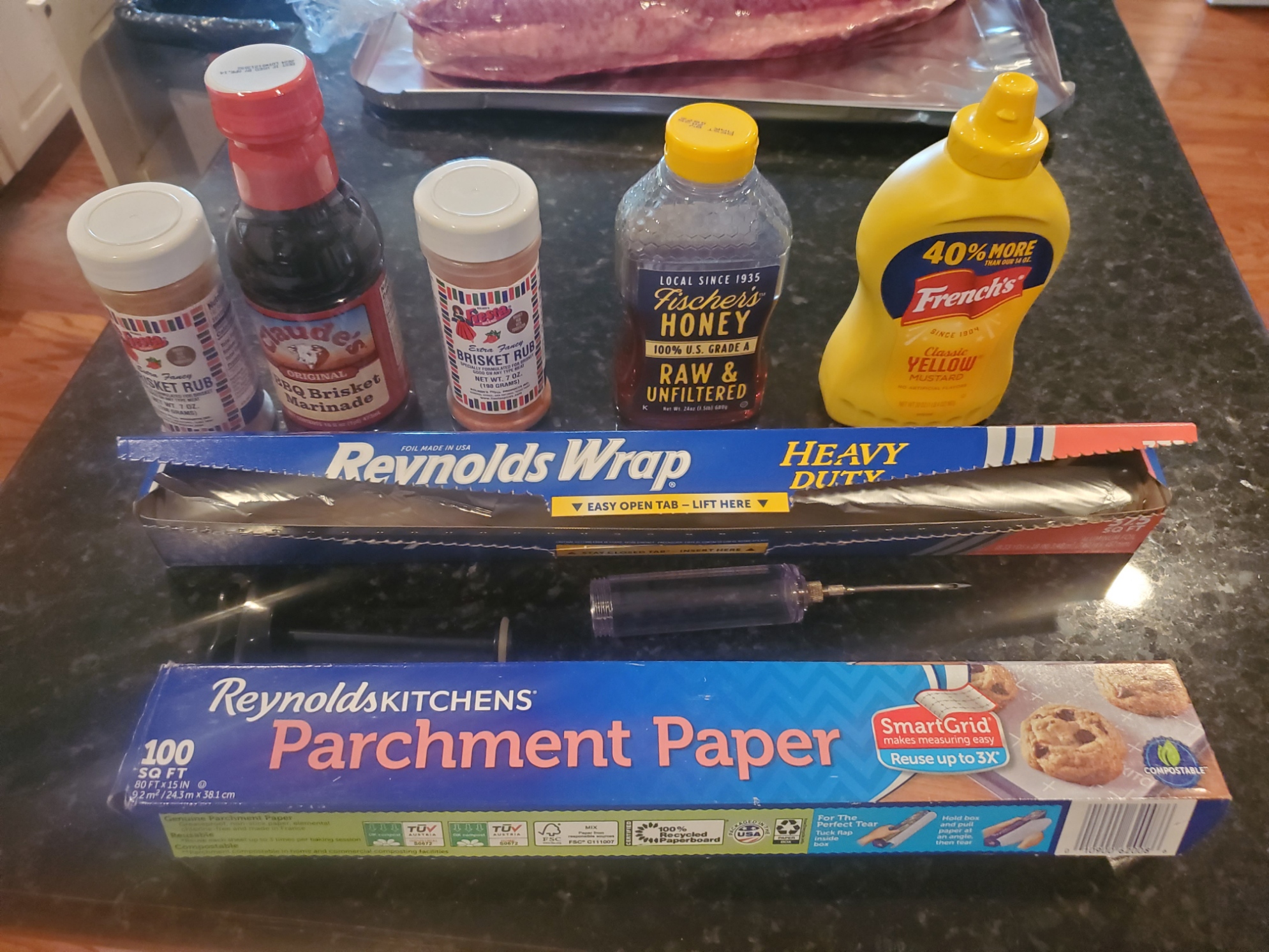
This is after I injected the marinade. You can see all the little holes.
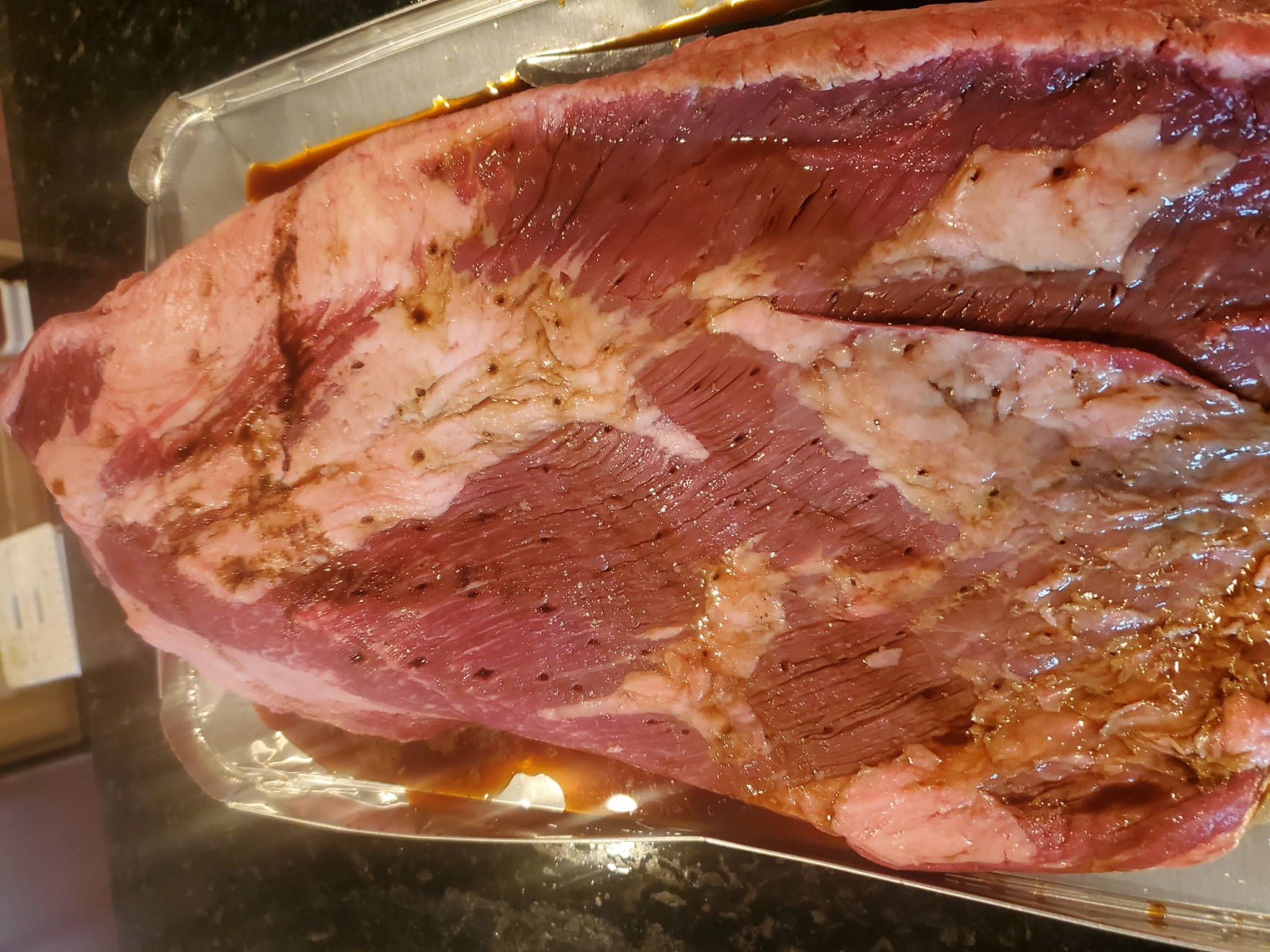
Here I have put the mustard on, but haven't smeared it around yet. This is so you can see how much I use.
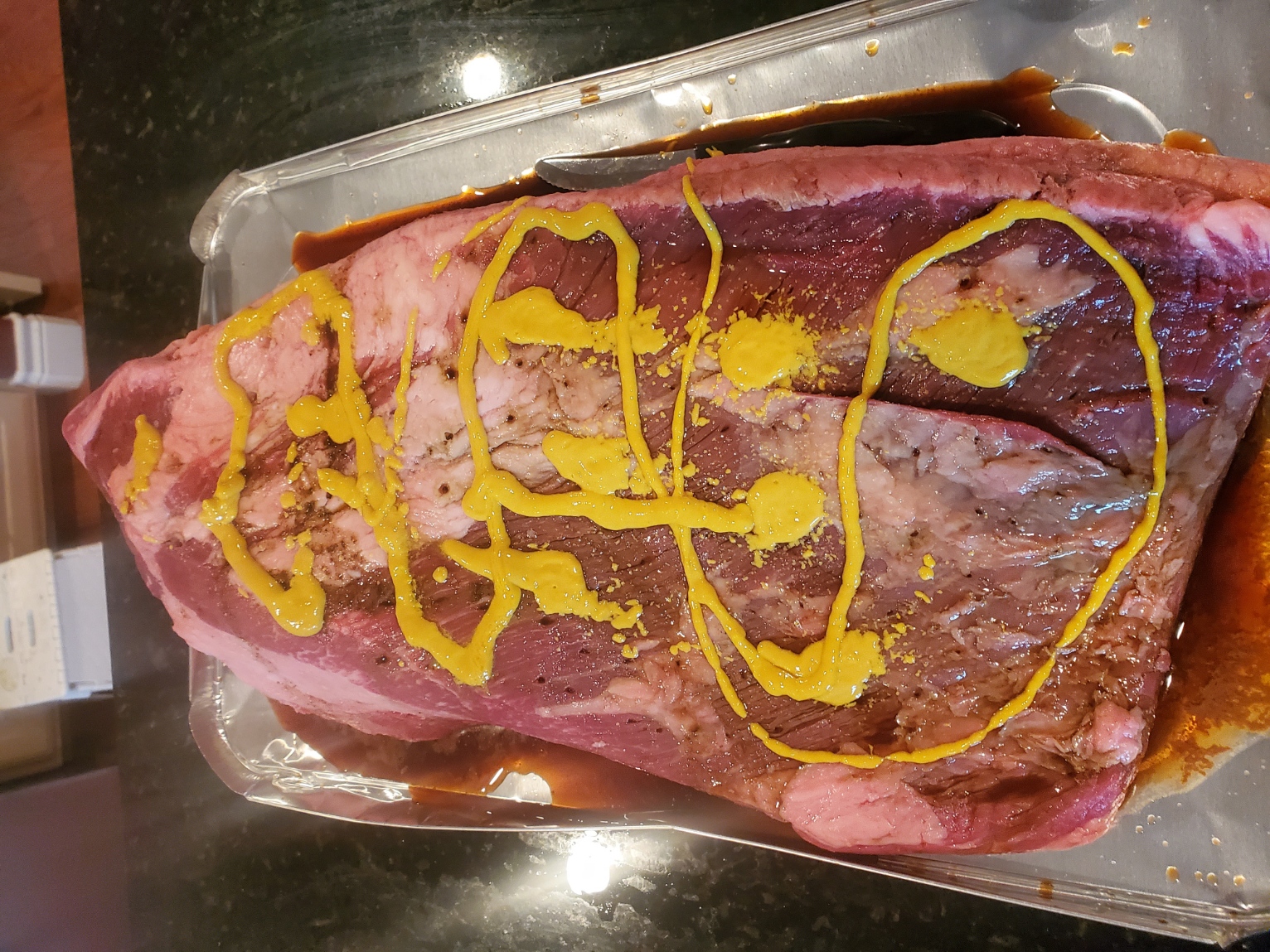
Mustard and rub smeared all over the brisket. Starting to look yummy!
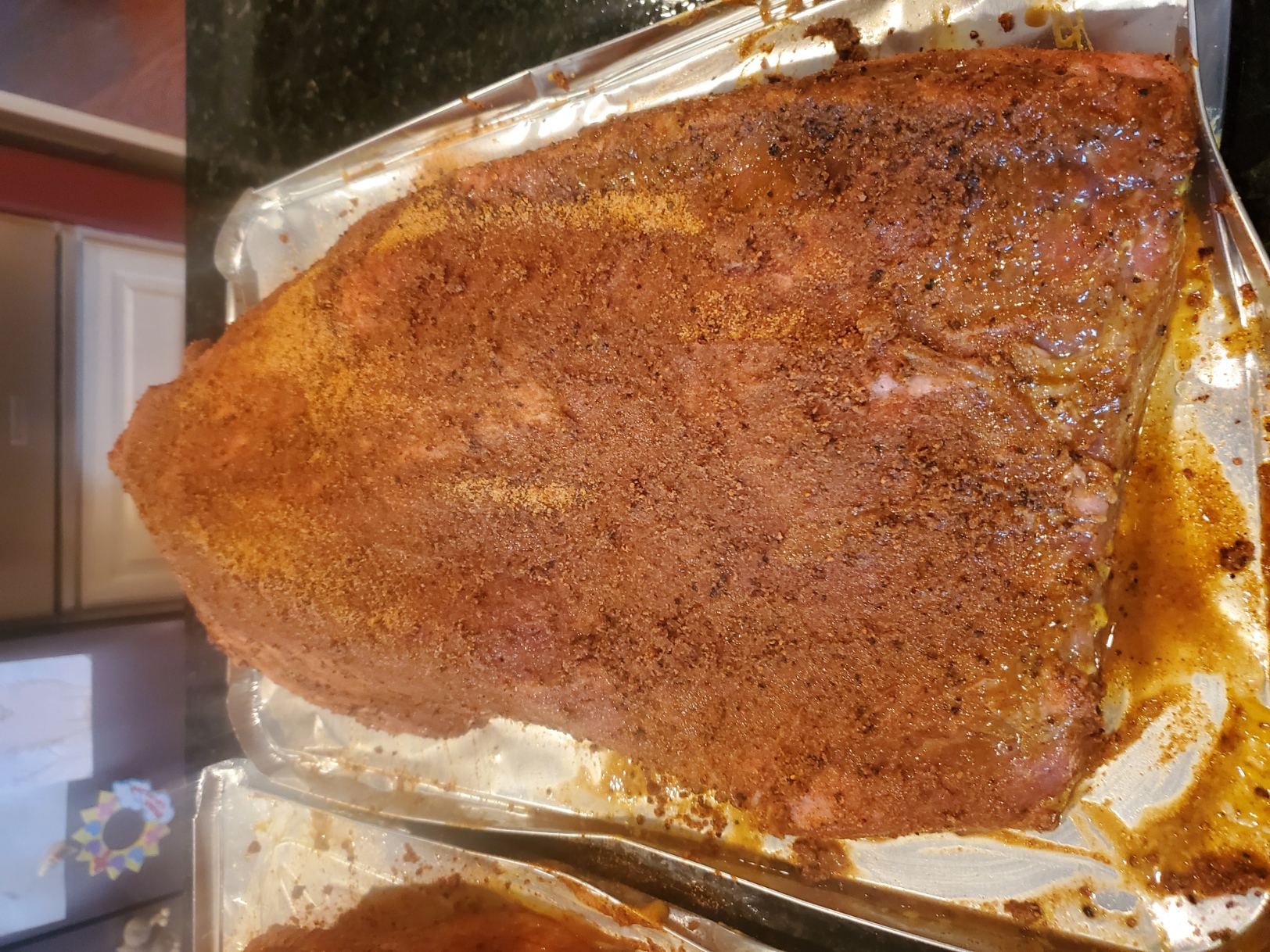
This is the smoker I use. It actually belongs to my wife's cousin. He left it at my house about fifteen years ago (as of 2023). When he wants to smoke meat himself, he comes to my house and does it. The rest of the time, I can use it. I like this arrangement.
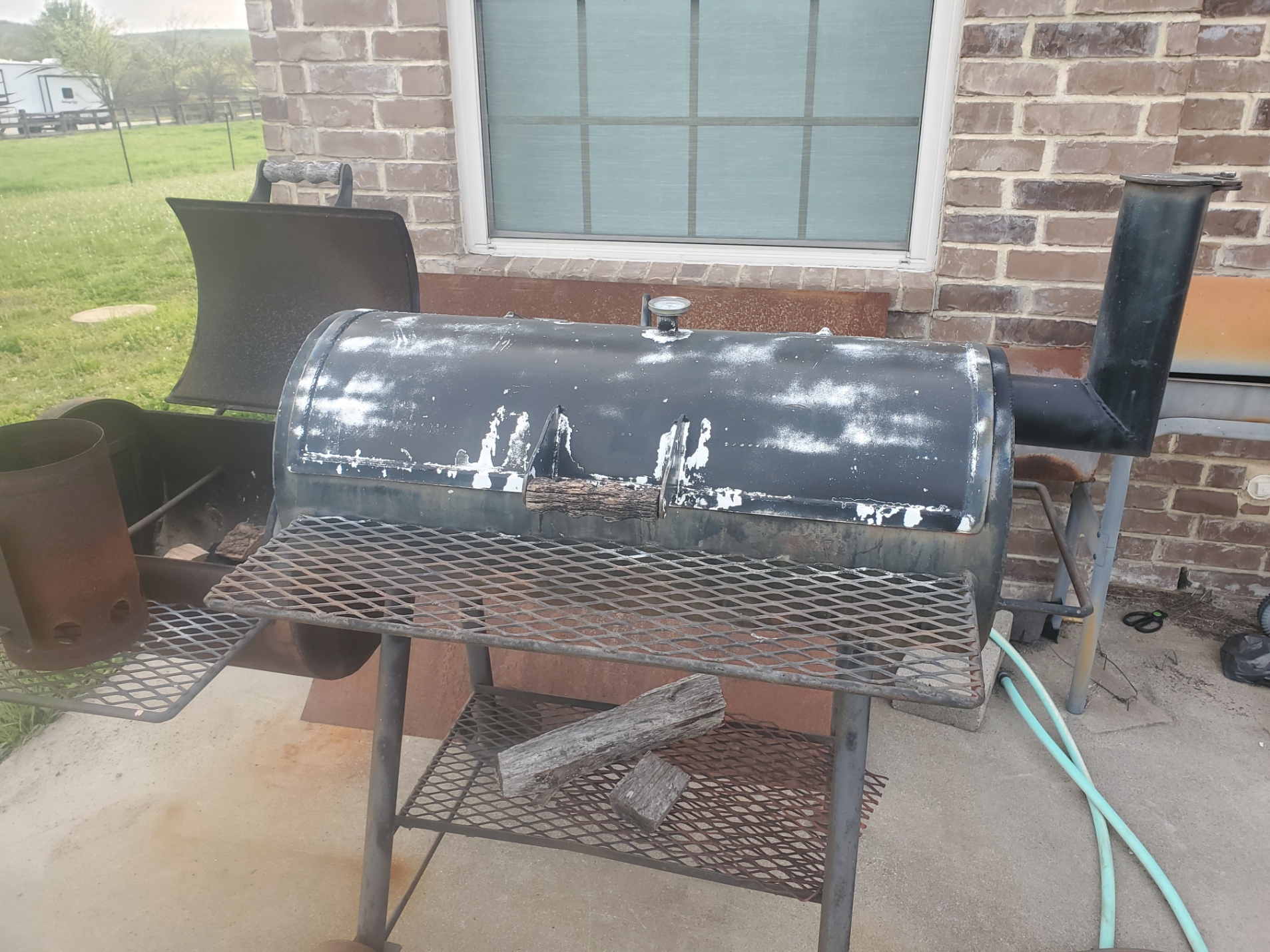
This is the charcoal and hardwood I happened to get this time. I've used lots of kinds, and honestly can't tell a lot of difference. Notice the charcoal chimney? If you haven't used one, give it a try. Makes starting the charcoal much easier.
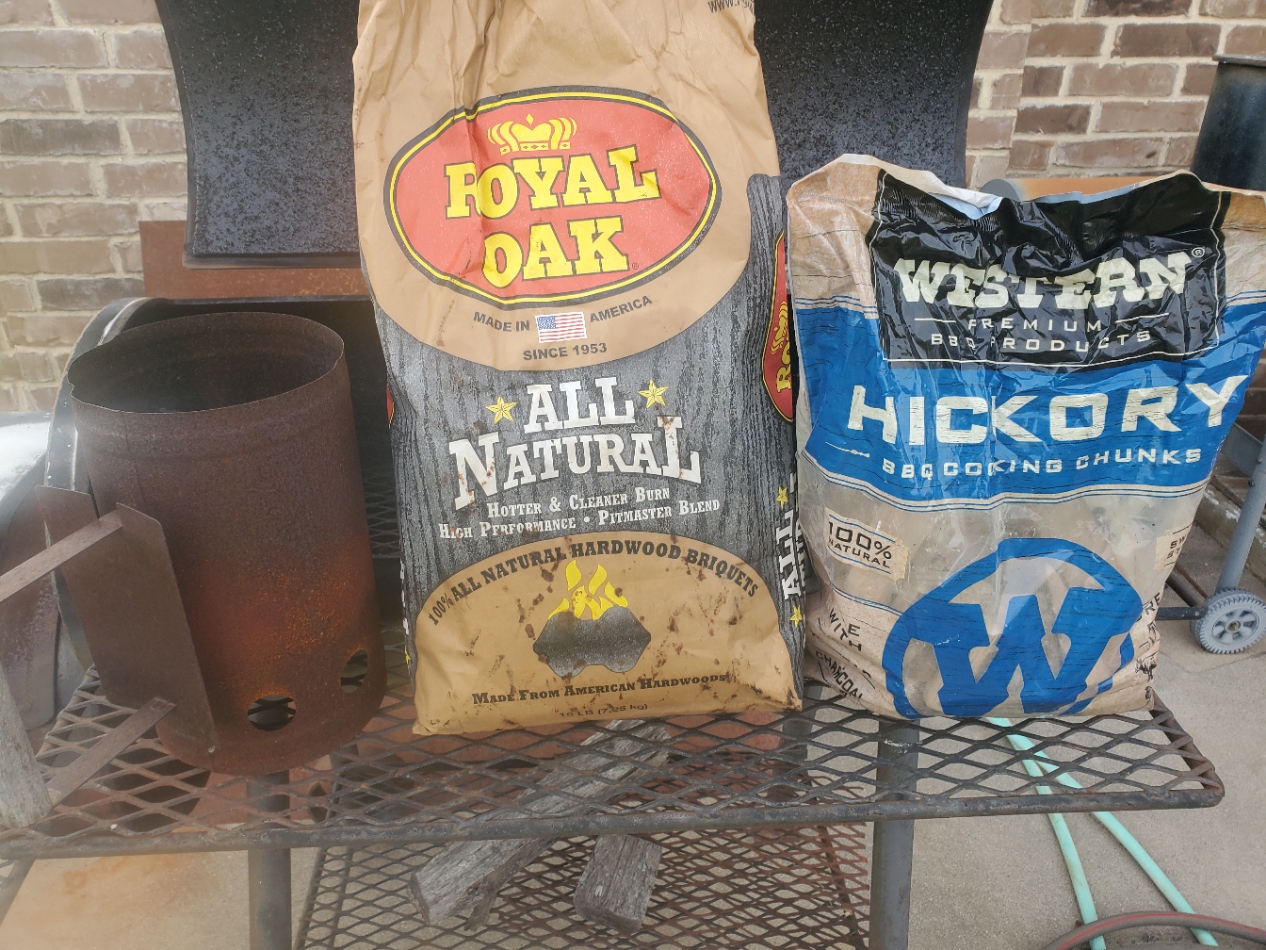
Here's how I arrange my charcoal and wood, with it all mixed together. I don't know if it really makes any difference, but it makes me happy. I'll pour the burning charcoal out of the charcoal chimney on top of this.
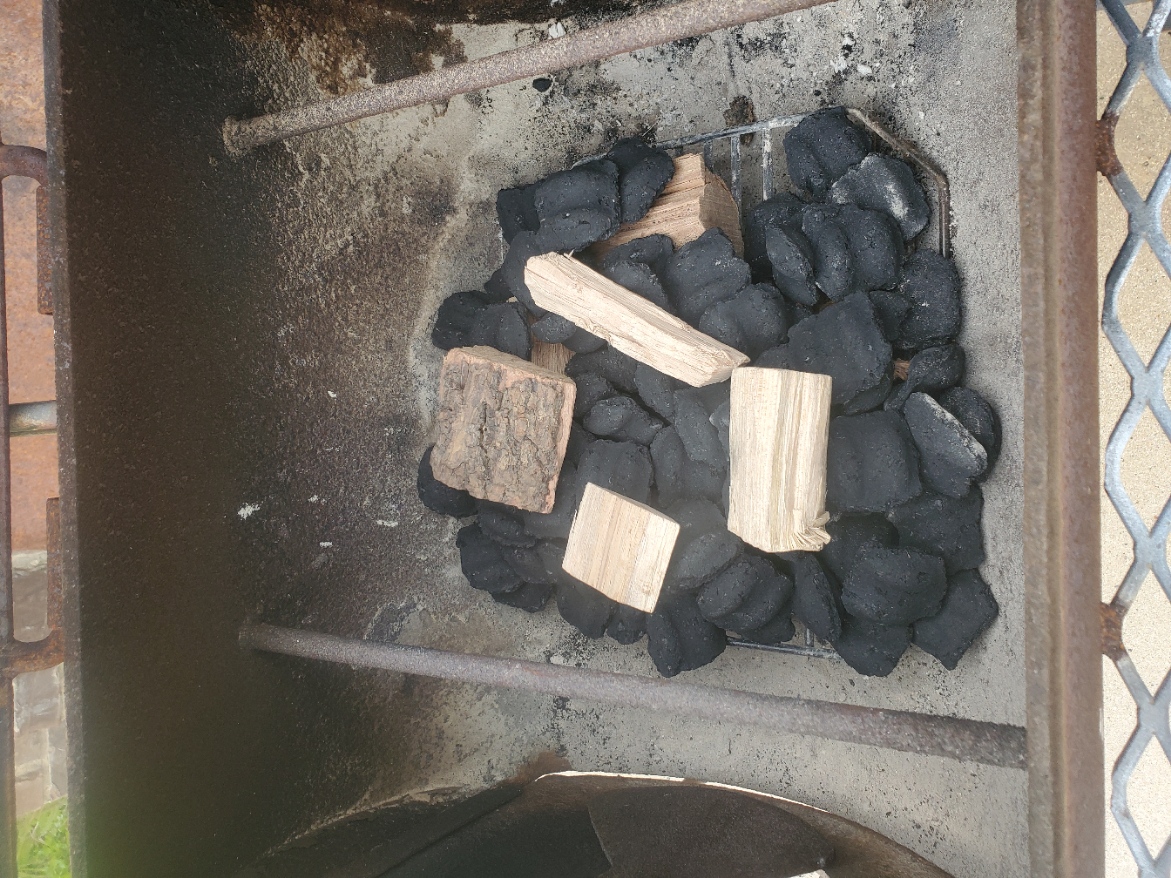
Melted honey/butter mixture
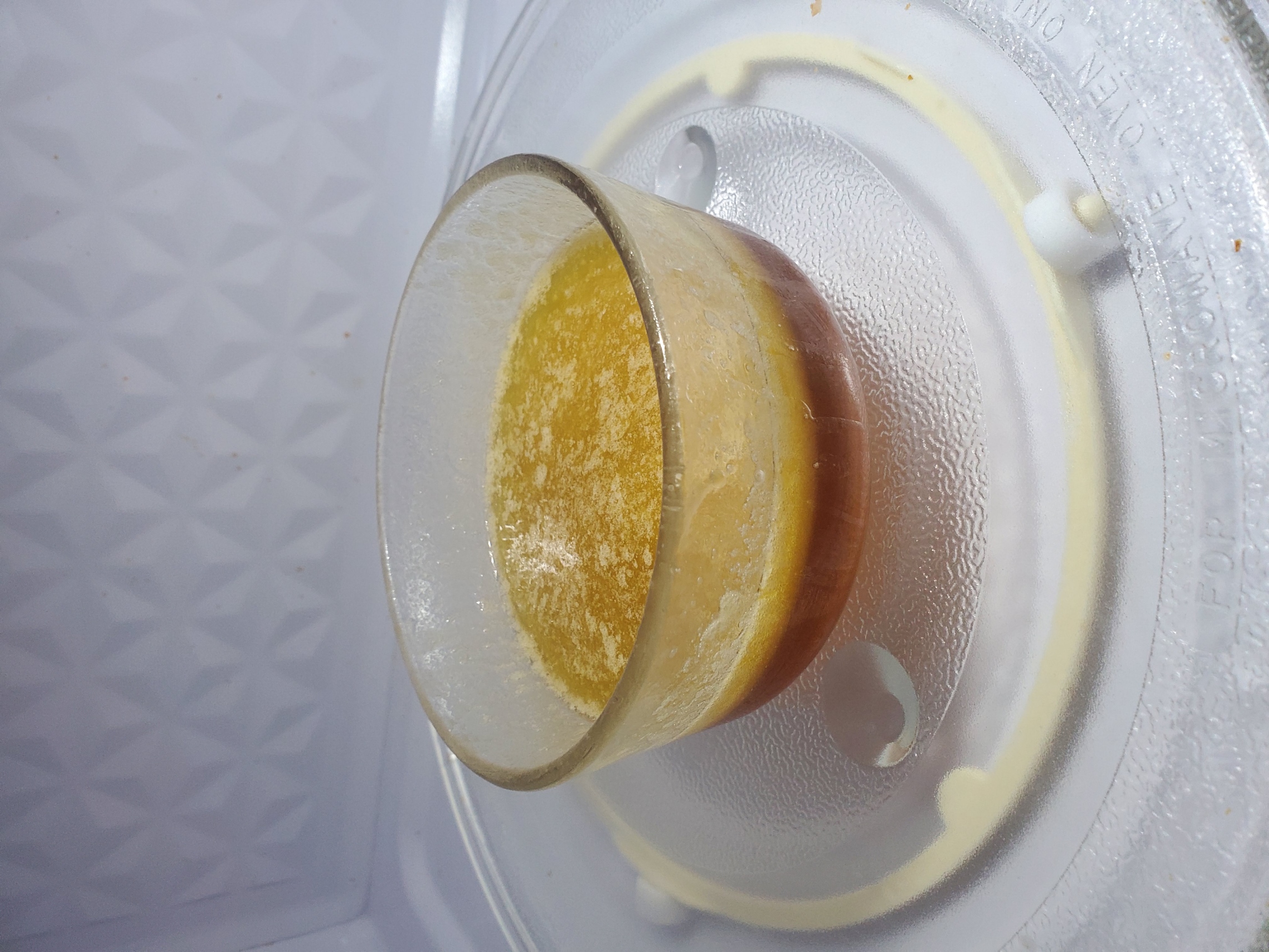
Pans, one with the foil in and ready to receive a brisket. I hadn't put foil in the other pan yet.
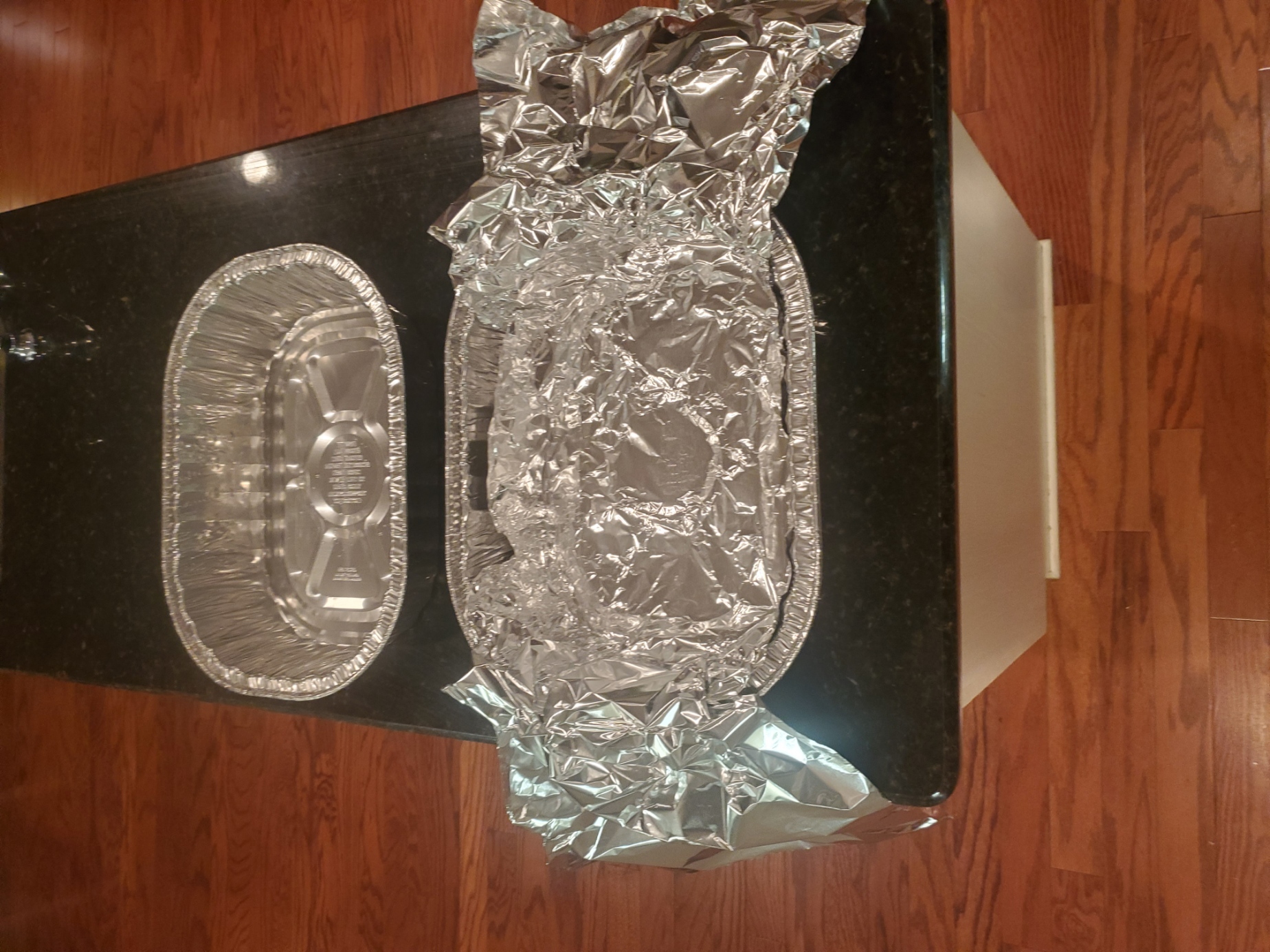
Brisket in pan, with melted honey/butter poured over the top
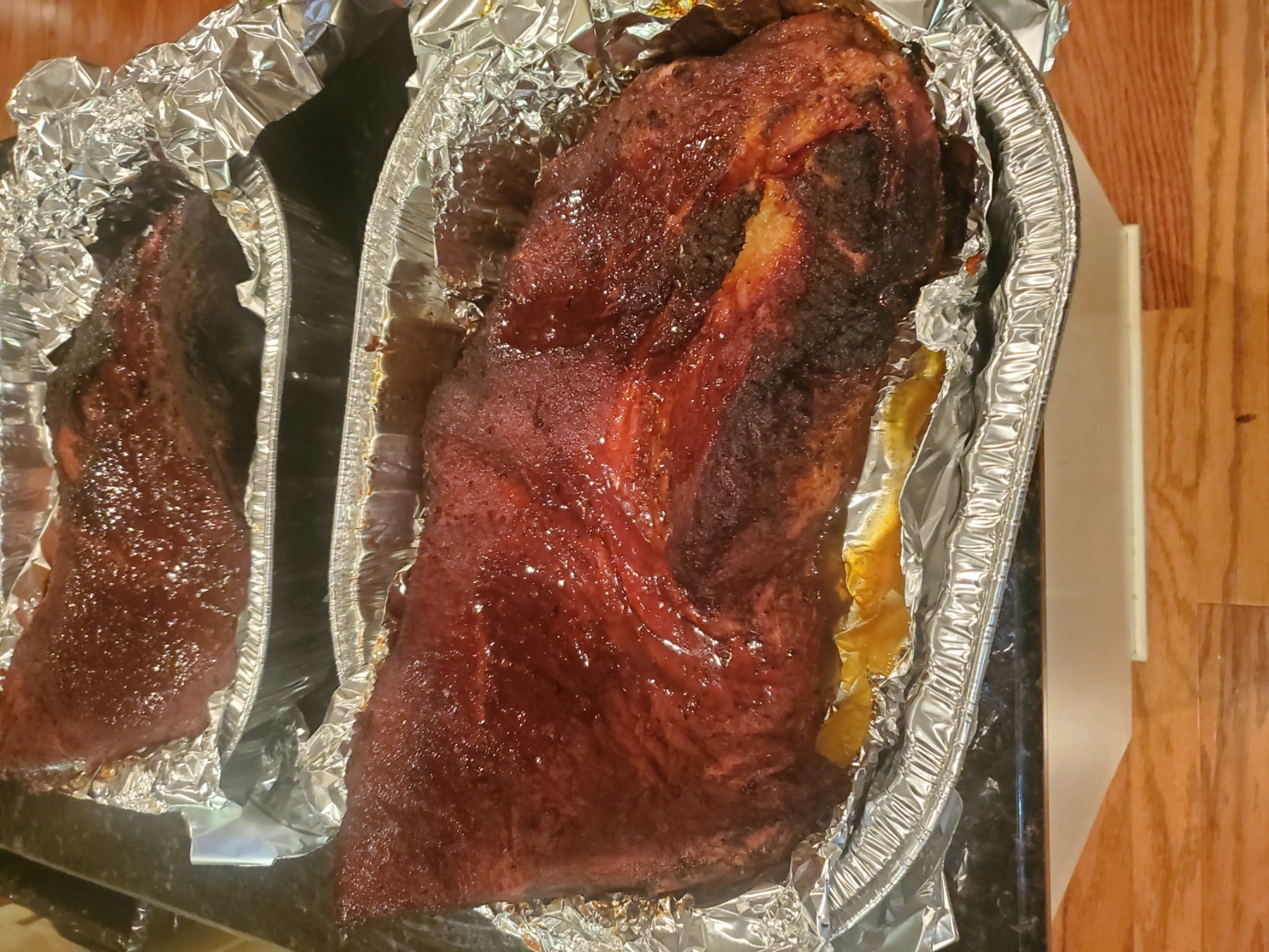
Wrapped and ready to go into the oven
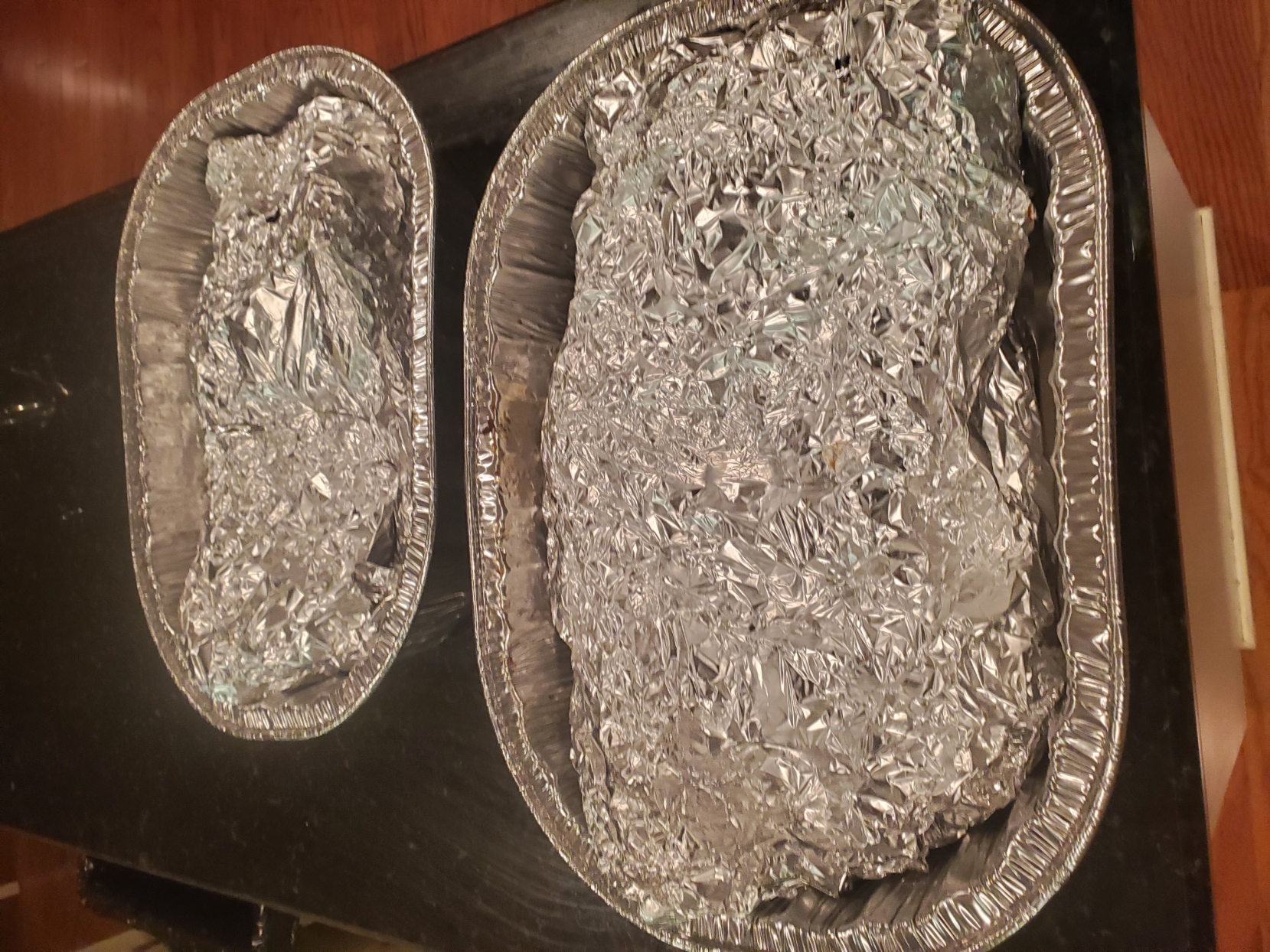
Juices I poured off the two briskets after 6 hours in the oven. Apple for scale. And breakfast.
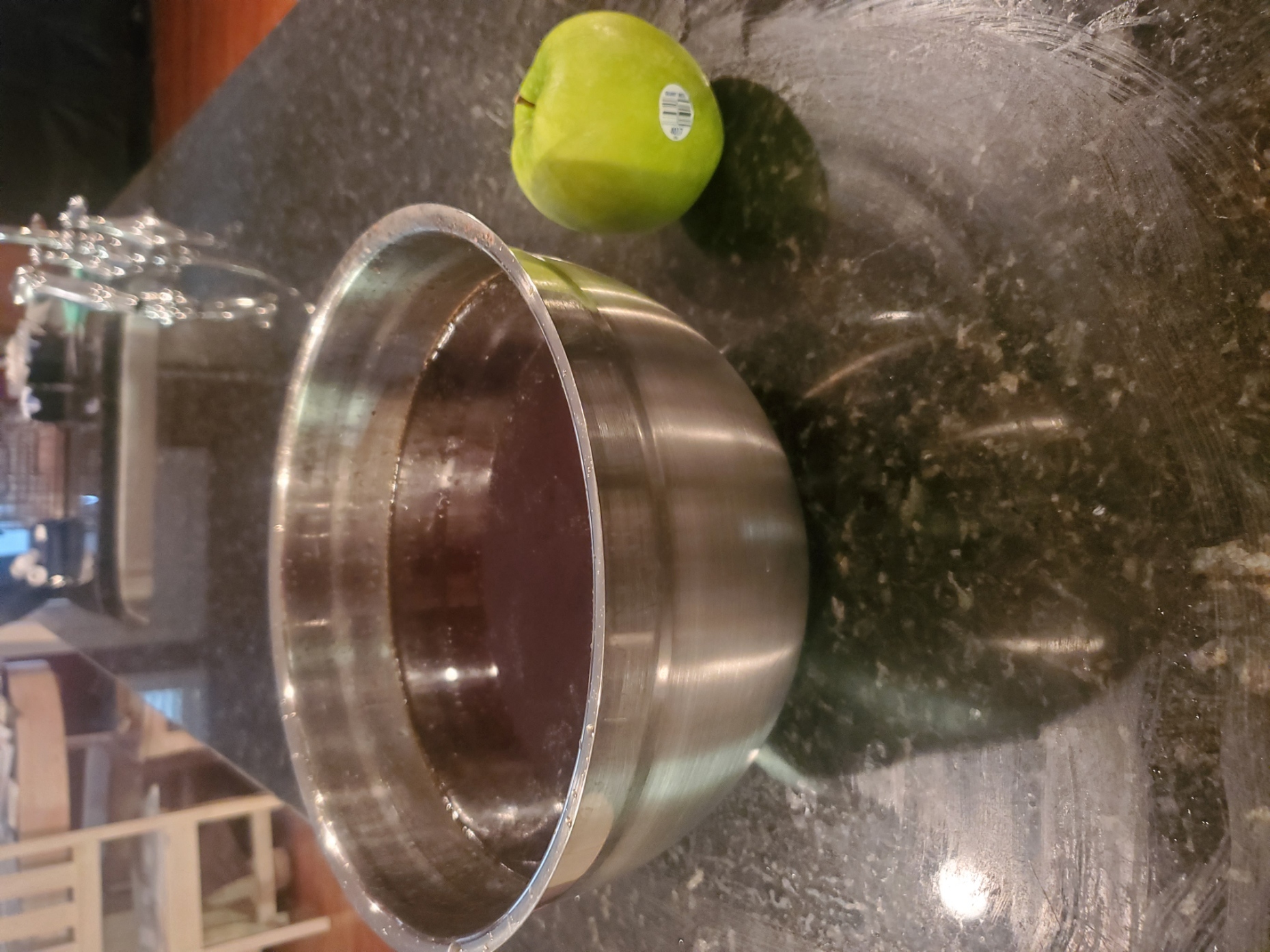
Both briskets in the cooler. They'll stay hot in there until supper.
